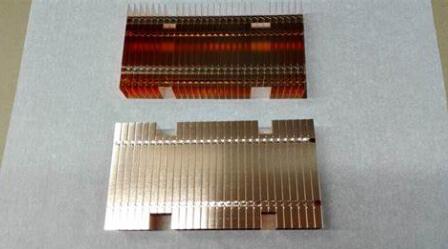Copper parts are widely used in various industries, from electronic and electrical equipment to architectural decoration, due to their excellent conductivity, thermal conductivity, and corrosion resistance. However, when exposed to air, copper easily oxidizes, forming a layer of copper oxide, which affects its appearance and functionality. This article provides a detailed overview of anti-oxidation treatment techniques for copper parts, including industrial applications and home solutions, to help extend their service life and maintain optimal performance.
I. Causes and Effects of Copper Oxidation
1.1 Causes of Oxidation
Copper reacts with oxygen in the air to form copper oxide. This process is accelerated in humid environments and those containing sulfides, leading to the formation of verdigris (basic copper carbonate). These oxides reduce the conductivity and thermal conductivity of copper, impacting its function and appearance.
1.2 Effects of Oxidation
- • Aesthetic Degradation: The oxidation layer causes copper to lose its luster, affecting its appearance.
- • Performance Reduction: The oxidation layer affects the conductivity and thermal conductivity of copper, especially in electronics and electrical fields.
- • Increased Corrosion: The oxidation layer is not entirely protective and can exacerbate corrosion in certain environments.
II. Anti-Oxidation Treatment Techniques for Copper Parts in Industrial Applications
2.1 Chemical Plating
Chemical plating involves forming a protective film on the surface of copper parts through a chemical reaction. Common chemical platings include tin plating, nickel plating, and silver plating. Chemical plating not only improves oxidation resistance but also enhances wear resistance and conductivity.
Steps:
- 1. Surface Cleaning: Remove surface oxides and oil stains using acid or alkaline cleaning.
- 2. Activation Treatment: Use an acidic solution to activate the surface, promoting plating adhesion.
- 3. Chemical Plating: Immerse parts in the chemical plating solution to form the plating layer through a reaction.
- 4. Post-Treatment: Wash and dry the parts to ensure the integrity of the plating.
2.2 Electroplating
Electroplating deposits a metal layer on the surface of copper parts through electrolysis, providing a uniform and dense protective layer that effectively prevents oxidation. Common electroplating materials include zinc, nickel, and chromium.
Steps:
- 1. Surface Treatment: Mechanically polish or chemically clean to ensure a dirt-free surface.
- 2. Preparation of Electrolytic Solution: Prepare a suitable electrolytic solution.
- 3. Electroplating Process: Immerse the parts in the electrolytic solution and deposit the metal layer using electric current.
- 4. Post-Treatment: Wash and passivate the coating to enhance durability.
2.3 Coating Protection
Coating protection involves forming a protective coating on the surface of copper parts through spraying or dipping. Common coating materials include varnish, epoxy resin, and polyurethane. Coating protection can isolate air and moisture, preventing oxidation.
Steps:
- 1. Surface Treatment: Sand and clean the surface to ensure smoothness and no impurities.
- 2. Coating Application: Evenly apply the coating using spraying or dipping methods.
- 3. Curing: Allow to dry naturally or cure by heating.
- 4. Inspection and Repair: Check the uniformity and completeness of the coating.
III. Home Solutions
3.1 Household Chemical Cleaning
Household chemical cleaning can effectively remove the oxidation layer from the surface of copper parts, restoring their luster and appearance. Common cleaning agents include lemon juice, vinegar, and baking soda.
Steps:
- 1. Prepare the Cleaning Agent: Pour lemon juice or vinegar into a small container and add an appropriate amount of baking soda, stirring well.
- 2. Clean the Surface: Dip a soft cloth into the cleaning agent and wipe the surface of the copper parts to remove the oxidation layer.
- 3. Rinse and Dry: Rinse with clean water and dry the surface.
3.2 Coating Protection
At home, you can use clear varnish or special metal protectants to coat the surface of copper parts to prevent oxidation.
Steps:
- 1. Surface Treatment: Wipe the surface of the parts with a soft cloth to ensure they are dust- and dirt-free.
- 2. Coating Application: Evenly apply the clear varnish or protectant using a brush or sprayer.
- 3. Natural Drying: Allow to dry naturally in a well-ventilated area.
Conclusion
Anti-oxidation treatment for copper parts is crucial for extending their lifespan and maintaining optimal performance. Whether in industrial applications or home environments, oxidation of copper can be effectively prevented through chemical plating, electroplating, and coating protection methods. It is hoped that the guidelines and techniques provided in this article will help you better protect and maintain copper parts, enhancing their value and appearance.






 Customer service 1
Customer service 1  Customer service 2
Customer service 2